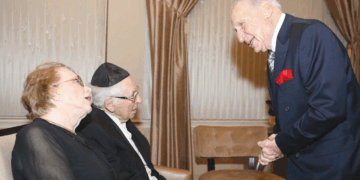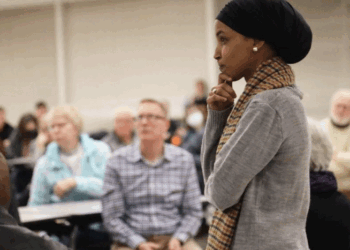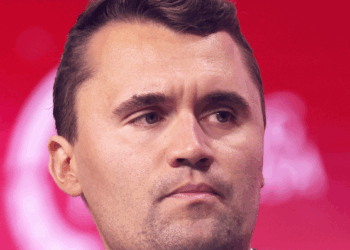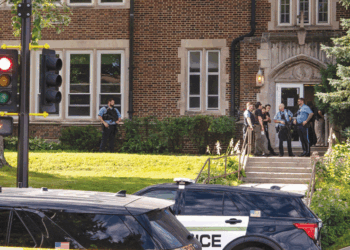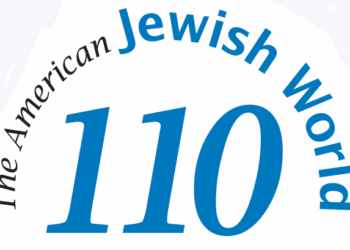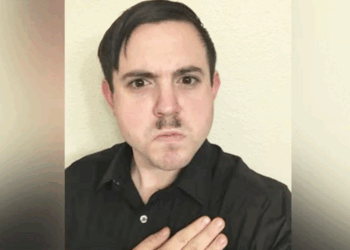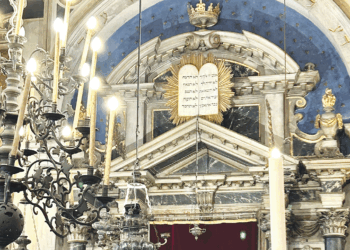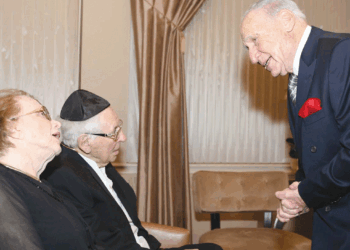Young Israeli soldier Gilad Shalit, who was abducted by Hamas militants in a raid across the Gaza-Israel border, on June 25, 2006, is fine now, according to his father, Noam Shalit. The young soldier was held in cruel captivity, underground for nearly five years and four months, before he was freed in a prisoner swap that released 1,027 Palestinian and Israeli Arab inmates from Israeli prisons.
I talked on the phone with Noam Shalit on Monday, a few hours before his talk at Mount Zion Temple in St. Paul, under the auspices of the Jewish Federation of Greater St. Paul.
“Gilad is real well,” Shalit responds to my general question about his son. “Gilad is a student now, first year in the college,” at the Interdisciplinary Center (IDC) Herzliya.
“He studies economics and sustainability, which is a new program in Israel,” says Shalit.
I heard some stories about Gilad Shalit during an interview with Gershon Baskin, during my visit to Israel last year. Baskin served as the negotiator between Israeli government and Hamas officials, in the behind-the-scenes talks that eventually led to Shalit’s release on Oct. 18, 2011.
Baskin — “a good friend of ours,” comments Noam Shalit — wrote a book about the tortuous negotiations that led to the prisoner swap and Gilad Shalit’s freedom. Baskin’s account, The Negotiator: Freeing Gilad Schalit from Hamas, was reviewed by Neal Gendler in this newspaper (3-14-14 AJW).
For example, Baskin told me that Shalit was kept literally underground by his Hamas captors; he saw the sun on one day over the span of more than five years. He was moved at night from house to house, as Hamas feared that Israeli commandos would stage a raid to free Shalit. As a result of being kept in underground rooms, young Shalit developed an acute vitamin D deficiency, and towards the end of his captivity had become lethargic and lost his appetite. Baskin said that he was near death.
“He was very thin and tired, very weak,” says Noam Shalit, regarding his son’s condition when he was released two and a half years ago. He was taken to an Israeli military airbase hospital and given blood transfusions.
“He was in very bad condition,” allows Shalit, who confirms that the lack of sunlight caused a vitamin D deficiency. Gilad also underwent a “complicated operation” on his left arm, which was injured when Hamas combatants crossed into Israel through an underground tunnel and attacked an IDF post. Two Israeli soldiers were killed, and two others, apart from Shalit, were injured. Gilad suffered a broken left hand and a shoulder wound, and was taken via a tunnel into Gaza.
“He remains a little bit disabled in his left arm,” comments Shalit, who adds that his son did not receive “proper medical care” for his injuries during his captivity, “except maybe bandages.”
As Gilad languished in captivity in Gaza, a popular movement started putting pressure on the Israeli government — first under the leadership of Ehud Olmert, then under Benjamin Netanyahu — to negotiate with Hamas for the soldier’s release.
During a previous visit to Israel, in 2008, I went for a walk and came upon a table set under a canopy next to the prime minister’s residence in Jerusalem, where volunteers gathered signatures on petitions calling for Shalit’s release. Freedom for Gilad Shalit became a cause célèbre in Israel and in the Jewish Diaspora. Around Israel flags and posters depicting Shalit’s face were everywhere. I signed the petition.
Noam Shalit, who is on a speaking tour of the U.S. and Canada, recalls that in 2009, during “the last days of [the premiership of] Olmert, we came to the tent [by the prime minister’s residence] for the first time, and sat there for two weeks…. And then we came back, in 2010, when Netanyahu was prime minister.”
In late June 2010, Shalit and his wife, Aviva, led a march from their home in western Galilee to Jerusalem, to the prime minister’s residence, where they were joined by 10,000 supporters.
“It was four years [into] Gilad’s captivity that we declared that we were going to sit by the prime minister’s residence, and we were not going back to our home without Gilad,” Shalit explains.
Noam Shalit says that the appointment of David Meidan, a Mossad general, as the “third special coordinator for captives and missing soldiers,” in April 2011, marked a turning point in the negotiations to free Gilad. Meidan “enabled” Gershon Baskin to use his contacts with Palestinian officials to eventually broker a breakthrough with Hamas, according to Shalit.
Another advance in the negotiations came “via the Egyptians, the new regime,” which took over after the ouster of dictator Hosni Mubarak. “Hamas respected this new regime [under Gen. Mohamed Hussein Tantawi]… and eventually managed to cut a deal, the exchange of prisoners,” recounts Shalit.
Of course, not all Israelis supported the deal, which released more than a thousand Palestinian prisoners. Many thought that this set a bad precedent, and would encourage future kidnappings by Hamas militants.
In any case, Gilad was reunited with his family, his parents and his older brother and younger sister.
And he visited the U.S. in 2012, attending the NBA All-Star Game in Orlando, Fla., and a championship finals game. A big hoops fan, Gilad Shalit will turn 28 on Aug. 28.
Noam Shalit, whose twin brother was killed in action during the 1973 Yom Kippur War, notes that American Jews still are keenly interested in the ordeal of Gilad Shalit and his family. He knows that there was a lot of support for freeing Gilad from American Jewish communities — “writing letters, signing petitions, writing to the congressmen, or even visiting us in the protest tent in Jerusalem.”
At the conclusion of our interview, Shalit says, “Now, after two and a half years, I’m a little bit surprised that there is still so much emotion from this story and people are very interested in the details.”
— Mordecai Specktor / editor [at] ajwnews [dot] com
(American Jewish World, 5.23.14)

